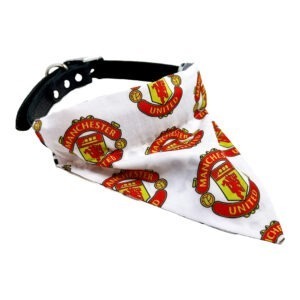Saint Bernards are majestic creatures, known for their gentle temperament and iconic appearance. However, their beautiful, thick coats require consistent grooming to keep them looking their best and feeling comfortable. This comprehensive guide will walk you through the grooming needs of your Saint Bernard, from puppyhood to their senior years, and provide practical solutions to common grooming challenges.
Understanding the Saint Bernard Coat
Saint Bernards have a distinctive double coat that consists of a dense undercoat and a rougher topcoat. This double layer is designed to protect them from harsh weather conditions, but it also means they are heavy shedders, especially during the shedding seasons in spring and fall. Regular grooming is essential to manage shedding and prevent matting and tangling.
The Importance of Regular Grooming for Saint Bernards
Regular grooming is not just about maintaining your Saint Bernard’s appearance; it’s also crucial for their health and comfort. Grooming helps distribute natural oils across their coat, keeping it healthy and shiny. It also allows you to check for any skin issues, parasites, or abnormalities that might require veterinary attention.
Some of our latest products...
-
犬用バンダナ
Liverpool FC Dog Bandana
$ 13.19 – $ 16.12 米ドル オプションを選択 この商品には複数のバリエーションがあります。 オプションは商品ページから選択できます -
犬用バンダナ
Manchester City Dog Bandana
$ 13.19 – $ 16.12 米ドル オプションを選択 この商品には複数のバリエーションがあります。 オプションは商品ページから選択できます -
犬用バンダナ
Manchester United Dog Bandana
$ 13.19 – $ 16.12 米ドル オプションを選択 この商品には複数のバリエーションがあります。 オプションは商品ページから選択できます -
Grooming Needs Based on Life Stages
Puppy Stage: Saint Bernard puppies have softer, shorter coats that require gentle grooming. Use a soft brush to get your puppy accustomed to the grooming process. Regular handling of their paws, ears, and mouth during this stage will make future grooming tasks like nail trimming and teeth cleaning easier.
Adult Stage: As your Saint Bernard matures, their coat will become denser and longer, requiring more intensive grooming. Regular brushing becomes crucial to manage shedding and prevent matting. Bathing should still be infrequent, but ear cleaning, teeth cleaning, and nail trimming should be regular parts of your grooming routine.
Senior Stage: Senior Saint Bernards may experience changes in their coat and skin health. Regular grooming remains important, but be gentle and watch out for any lumps, bumps, or skin irritations that weren’t there before.
Step-by-Step Guide to Grooming a Saint Bernard
Brushing: Brush your Saint Bernard at least three times a week using a slicker brush or a rake designed for double-coated breeds. Always brush in the direction of hair growth, and be thorough to ensure you reach the dense undercoat.
Bathing: Saint Bernards only need bathing every two to three months, or when they get particularly dirty. Use a dog-friendly shampoo to protect their skin’s natural oils. Always brush your dog before bathing to remove any loose hair and tangles.
Ear Cleaning: Check your Saint Bernard’s ears weekly. Use a vet-approved ear cleaner and cotton balls to gently clean the ears. Never insert anything into the ear canal.
Teeth Cleaning: Brush your Saint Bernard’s teeth at least two to three times a week using a dog toothpaste. Regular dental care can prevent bad breath and periodontal disease.
爪切り: Trim your Saint Bernard’s nails every three to four weeks. If you can hear their nails clicking on the floor, they’re too long. Be careful to avoid cutting into the quick, which can cause pain and bleeding.
Grooming Challenges and Solutions
Grooming a Saint Bernard can be a big job, especially during shedding seasons. Invest in a high-quality vacuum to manage loose hair in your home. If your Saint Bernard resists grooming, try breaking it up into shorter, more frequent sessions. Always reward your dog for their patience and cooperation.
Product Recommendations for Grooming Saint Bernards
A slicker brush or undercoat rake, dog-friendly shampoo and conditioner, a dog toothbrush and toothpaste, a pair of dog nail clippers, and a vet-approved ear cleaner are all essential grooming tools for your Saint Bernard. Brands like FURminator, Earthbath, and Virbac offer high-quality products designed for large, double-coated breeds.
Professional Grooming vs. Home Grooming for Saint Bernards
While regular home grooming is essential, professional grooming can be beneficial for tasks like trimming the coat or thorough ear cleaning. A professional groomer has the tools and expertise to handle these tasks safely and efficiently. However, basic grooming tasks like regular brushing, teeth cleaning, and nail trimming can be effectively done at home.
Health Checks During Grooming
Grooming is an excellent opportunity to check for any health issues. Look for any skin irritations, lumps, or parasites. Check their ears for any signs of infection like redness or a bad smell. Regularly checking your dog’s body will help you spot any potential health issues early.
結論
Grooming your Saint Bernard is a big job, but with the right tools and a regular routine, it’s entirely manageable. Not only will regular grooming keep your Saint Bernard looking their best, but it’s also an important part of their overall health care. Remember, grooming is also a bonding activity and should be a positive experience for both of you.
FAQs
- How often should I groom my Saint Bernard? Regular brushing should be done at least three times a week. Other grooming tasks like bathing, ear cleaning, teeth cleaning, and nail trimming have different frequencies.
- Can I shave my Saint Bernard to reduce shedding? Shaving a Saint Bernard is not recommended as it can interfere with their ability to regulate their body temperature and can cause skin issues.
- What type of brush is best for a Saint Bernard? A slicker brush or an undercoat rake is best for managing the Saint Bernard’s double coat.
- How often should I bathe my Saint Bernard? Bathing should be done every two to three months, or when your Saint Bernard gets particularly dirty.
- Do Saint Bernards need professional grooming? While basic grooming can be done at home, professional grooming can be beneficial for tasks like coat trimming or thorough ear cleaning.





